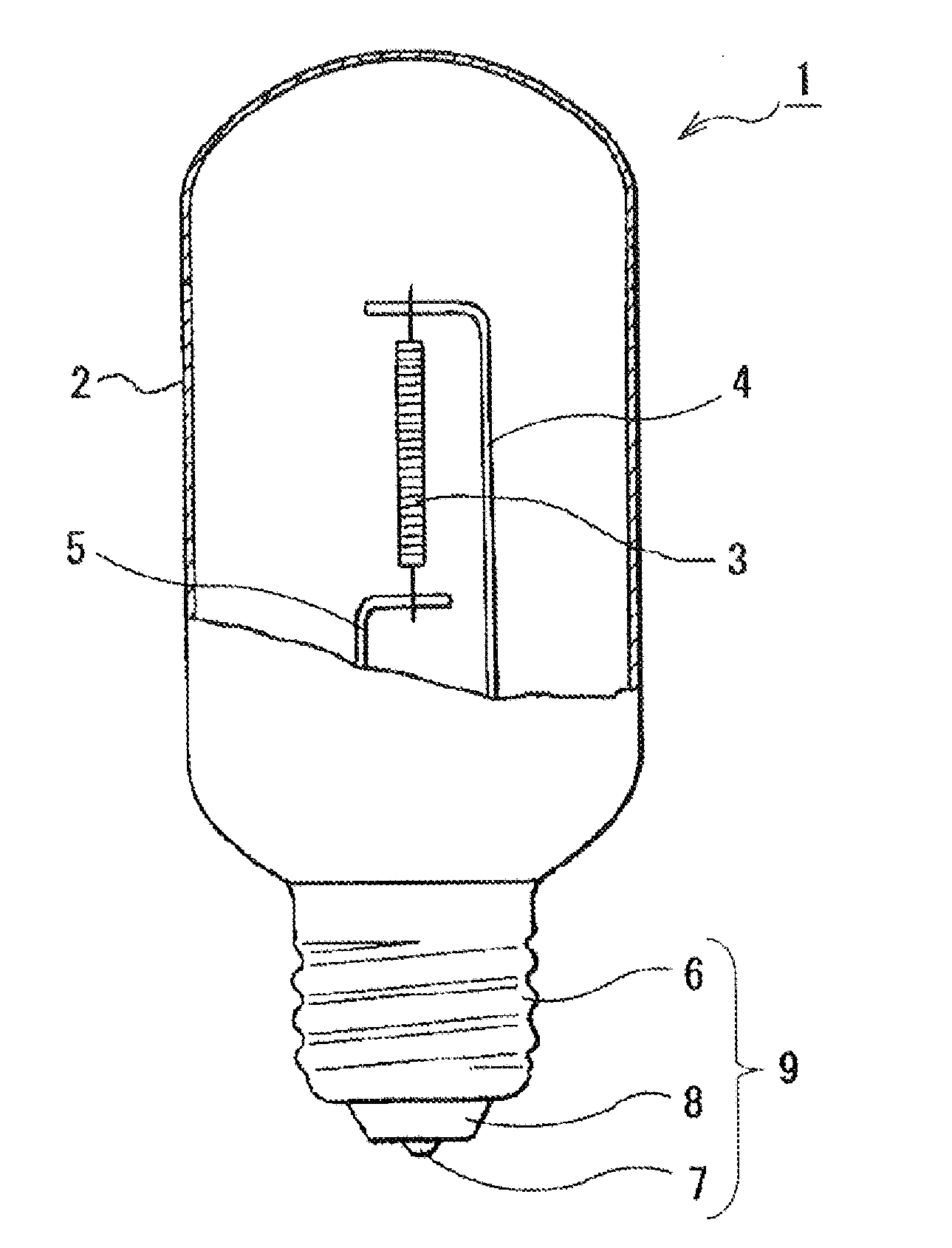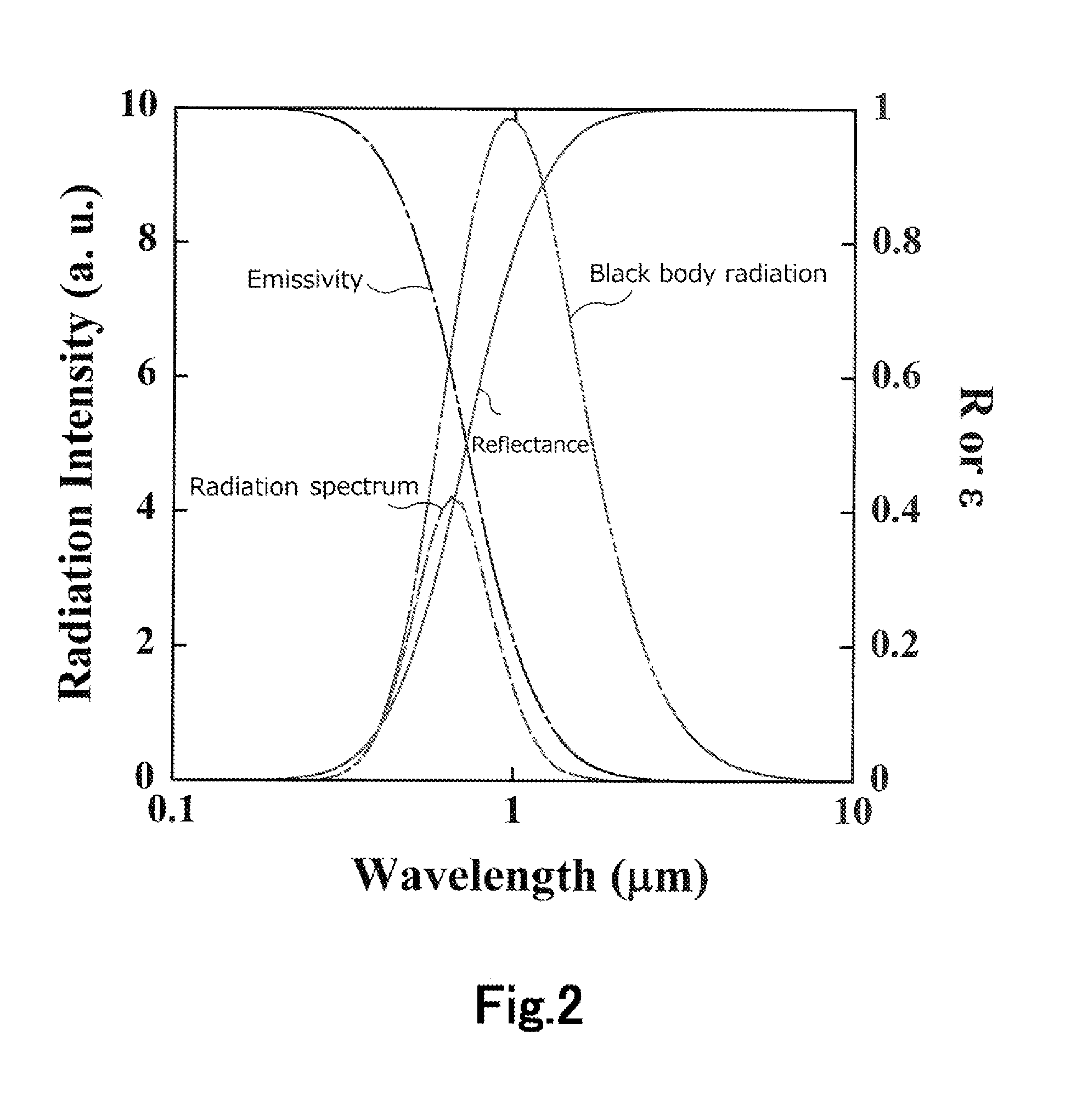Light source device and filament
a light source device and filament technology, applied in the field of filament, can solve the problems of inability to markedly improve the conversion efficiency of such a technique, and inability to provide efficient reabsorption, etc., to achieve high visible luminous efficiency, reduce infrared light radiation, and enhance visible light radiation
- Summary
- Abstract
- Description
- Claims
- Application Information
AI Technical Summary
Benefits of technology
Problems solved by technology
Method used
Image
Examples
specific examples
[0075]As the filaments of Examples 1 to 9 as specific examples, there are prepared filaments in which the substrate is constituted with Ta, and 9 kinds of combinations described later of the materials of the first layer 21 and the second layer 22 of the infrared light-reflecting film 20 are used.
[0076]In all the examples, as the visible light-absorbing film 30, an SiC film to which Ta metal microparticles (particle diameter, 3 nm) are added at a concentration of 0.1% is used. The thickness of the visible light-absorbing film 30 is about 200 nm. Further, as the visible light antireflection coating film 40, an MgO film is used, and the thickness thereof is 80 nm.
[0077]The substrate 10 is produced by a known process such as sintering and drawing of a material metal. The substrate is formed in a desired shape, for example, in the form of wire, rod, thin plate, or the like.
[0078]The surface of the substrate is polished with two or more kinds of diamond abrasive grains, and thereby proces...
PUM
 Login to View More
Login to View More Abstract
Description
Claims
Application Information
 Login to View More
Login to View More - R&D
- Intellectual Property
- Life Sciences
- Materials
- Tech Scout
- Unparalleled Data Quality
- Higher Quality Content
- 60% Fewer Hallucinations
Browse by: Latest US Patents, China's latest patents, Technical Efficacy Thesaurus, Application Domain, Technology Topic, Popular Technical Reports.
© 2025 PatSnap. All rights reserved.Legal|Privacy policy|Modern Slavery Act Transparency Statement|Sitemap|About US| Contact US: help@patsnap.com



